Hello. Some of you may know that I recently moved to a new house. I had originally planned to leave the landscaping/garden alone for a year to get a feel of everything, and start planting next spring. However, I recently realized that if I don’t plant spring bulbs now (there are just a few, sadly isolated tulips right now), I would have to wait until spring of 2020. That’s just too long!
So I’ve looking through online catalogs and thinking about what I’d like. Where I lived before, chipmunks ate my crocuses and deer ate my tulips. So I mostly just enjoyed my grape hyacinths and my daffodils.
Spring bulbs could have been a part of a Regency family’s flower garden. One of my go-to references for Regency gardening, William Cobbett’s The English Gardener (1820), mentions many of our favorites, including snowdrops, crocuses, daffodils, hyacinths, and tulips.
 Tulips were introduced to England sometime in the late 1500s. (Here is a wood block print of tulip types by John Parkinson, printed by Humfrey Lownes and Robert Young at the signe of the Starre on Bread-street hill, 1629.) There was a “Tulipomania” craze in the early 1600s, when bulbs reached prices 10 times normal, which broke in 1637. Tulips continued to be grown after that, of course, but became more wildly popular again in Victorian times.
Tulips were introduced to England sometime in the late 1500s. (Here is a wood block print of tulip types by John Parkinson, printed by Humfrey Lownes and Robert Young at the signe of the Starre on Bread-street hill, 1629.) There was a “Tulipomania” craze in the early 1600s, when bulbs reached prices 10 times normal, which broke in 1637. Tulips continued to be grown after that, of course, but became more wildly popular again in Victorian times.
Some interesting information on tulips: History of Tulips from the Heirloom Gardener
To learn more about the history of tulips in England and where you might see some good displays, check out “Tulips Through Time” from English Heritage.
For my own garden, I am going with a palette of mostly blue, pink, and purple (my daughters’ and my favorite colors), along with some white.
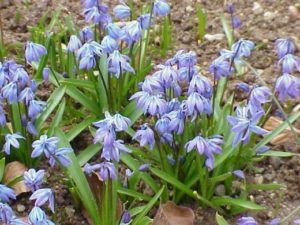 I am thinking about Siberian squills (Scilla Siberica) for early color. Cobbett lists a type of squill in his book but I think it is Scilla Italica.
I am thinking about Siberian squills (Scilla Siberica) for early color. Cobbett lists a type of squill in his book but I think it is Scilla Italica.
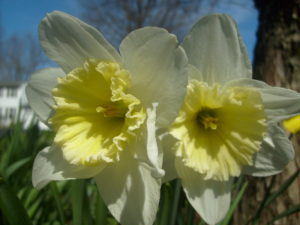 For daffodils, I am thinking of going with a variety that did very well at my previous house. It’s called “Ice Follies”. Its cups start out yellow and fade to white, and it has a leasant scent.
For daffodils, I am thinking of going with a variety that did very well at my previous house. It’s called “Ice Follies”. Its cups start out yellow and fade to white, and it has a leasant scent.
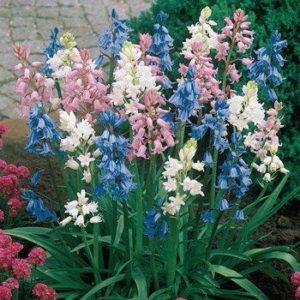
I also want some hyacinths. These are listed as “English wood hyacinths” which makes them sound similar to bluebells, which I think are in the hyacinth family, but these are actually Hyacinthoides Hispanica.
I’m still mulling what tulips I would like. I’m pretty sure I want pink, but there are many kinds I like. One is called “Angelique”–I had planted some of those at the previous house, where they looked lovely until the deer bit them off, leaving sad green stalks behind. I also like lily-flowered tulips, and these more conventionally shaped ones, called “Pink Diamond”, which are a lovely color.

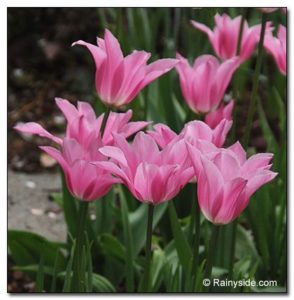
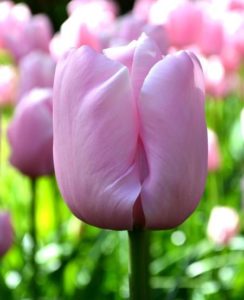
What do you think? Which of these tulips do you like best? Do you have favorite bulbs you like to grow?
Elena



